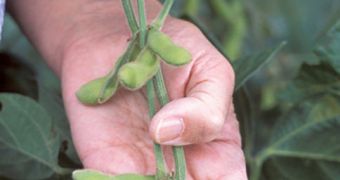Experts at the University of Wisconsin-Madison (UWM) are making considerable progress in understanding the way plants grow, from the roots up. Their goal is to develop crops that are more productive, and less prone to being decimated by microorganisms and other plagues.
UWM plant physiologist Edgar Spalding and his team are conducting a series of advanced experiments in a special room, where numerous Petri dishes are bathed in low-red light, and cameras are constantly pointing at a series of plant seedlings that have a very unusual appearance.
The reason why this type of light is used is that the investigators have determined that crop plants grow best under these conditions. The discovery is in tune with their main goal, which is to find the perfect solution to growing plants as fast as possible.
Another goal is to have this process take place in a manner that also ensures the plants thrive as they grow. Producing vast amounts of crops that have no taste isn't exactly in anyone's best interest.
Over the past five years, Spalding and his group have developed a large library of time-lapse video clips, showing how various crops grow under a variety of conditions. “We can't hope to improve a plant unless we understand it well,” he explains.
The UWM group is sponsored by a grant from the National Science Foundation (NSF) in their endeavor. Experts say that there's no other way to understand how plants work except to analyze the function of each individual gene involved in the process.
“One way to do that is to collect images of those plants that have those genes altered in some way. And by measuring how those plants grow and develop differently. We are able to infer the function of the gene that's been manipulated,” Spalding says.
Thus far, thousands of different types of corn have been genetically engineered in the lab, each of them featuring slightly different versions of the same genes. Scientists are trying to find a needle in the haystack, in their quest of pinpointing the optimal genetic combination out of trillions of possibilities.
“We have made hundreds of thousands of measurements from thousands of different plants. Let's say we had a ruler, we'd probably be on number two... maybe,” the team leader goes on to say.
Studies such as this one hold great promises for the future, but the work needed to move us forward is tedious, time-consuming, and requires a great deal of attention.

 14 DAY TRIAL //
14 DAY TRIAL //